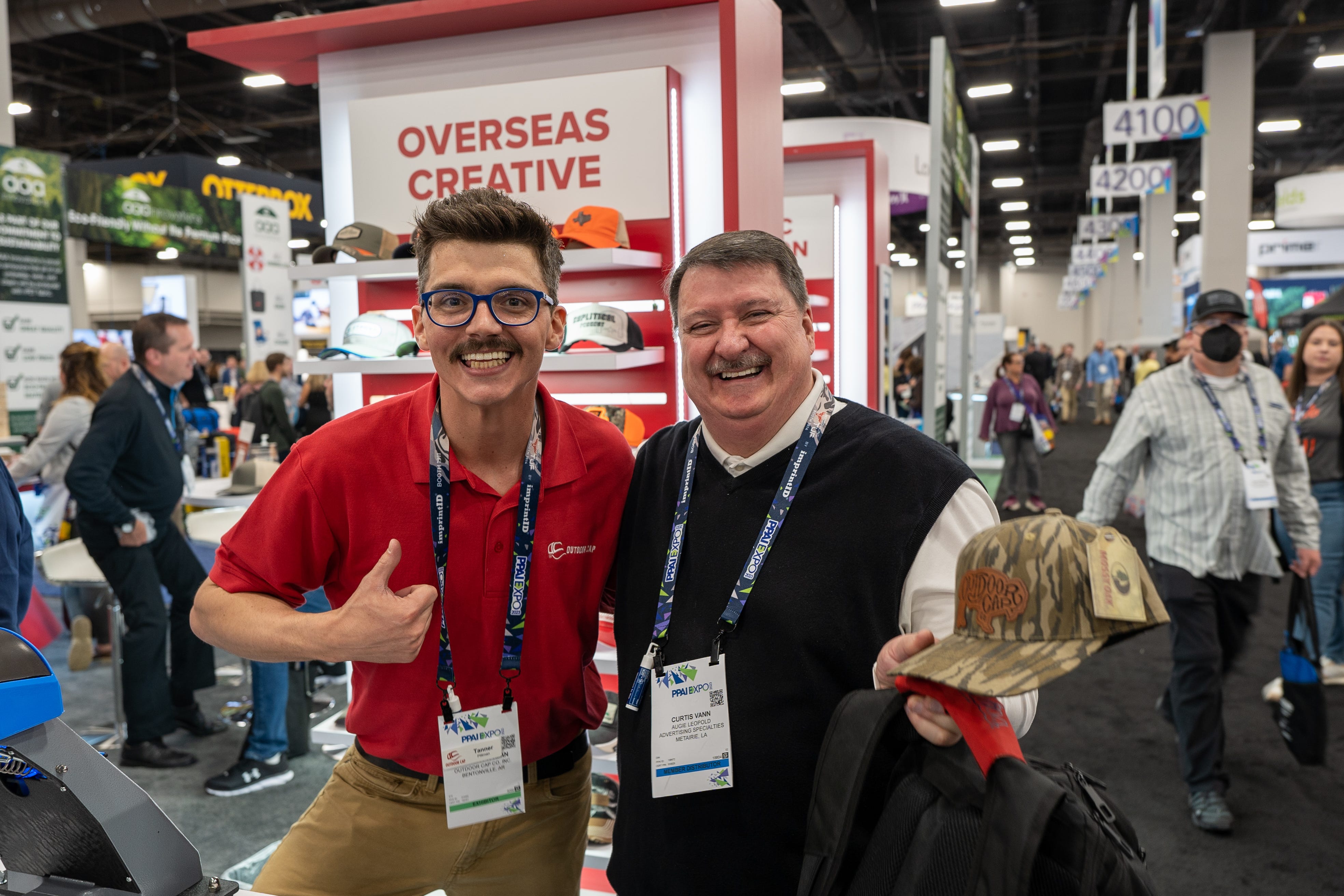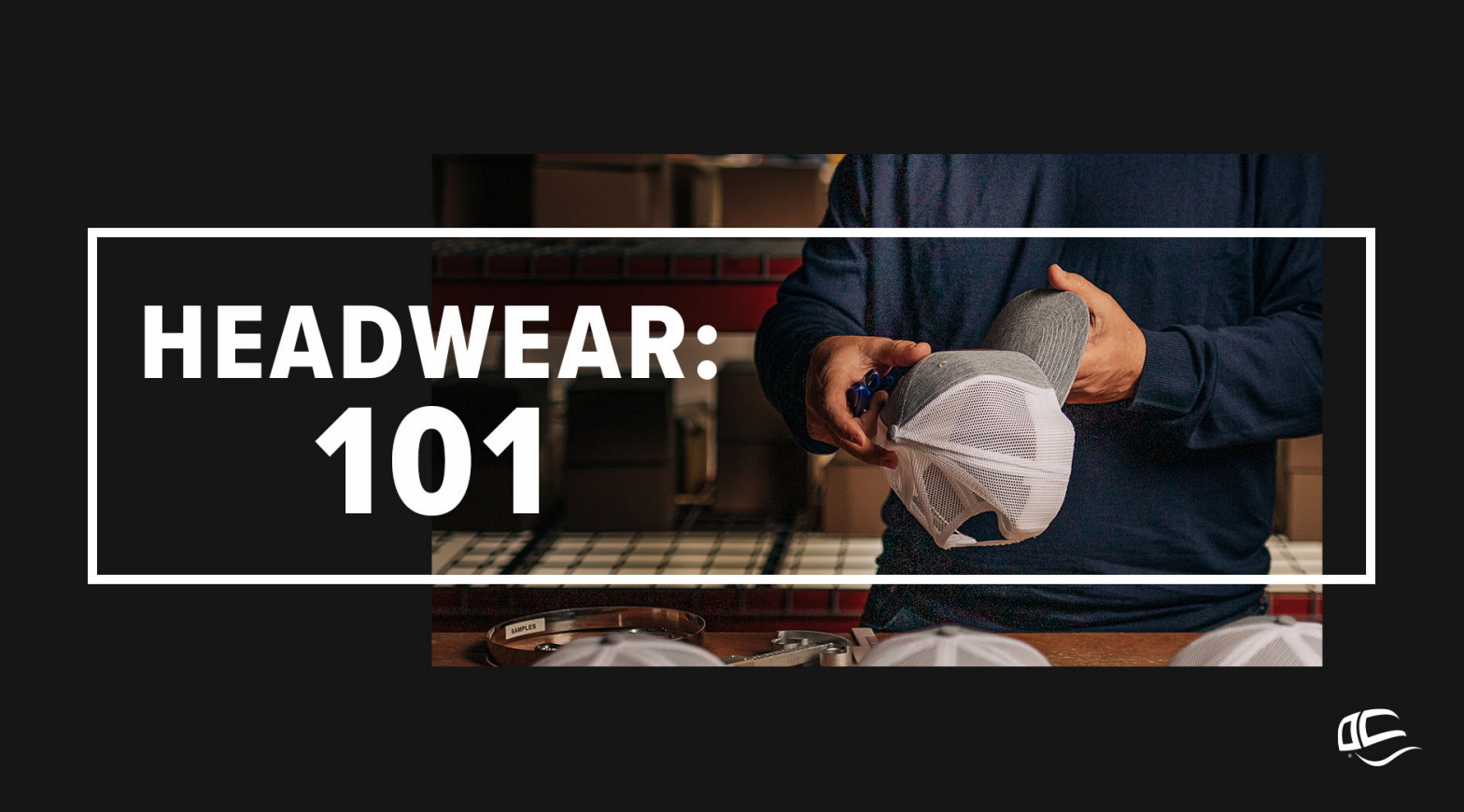Whether you are new to distribution, the hat industry, or need a refresher - you've come to the right place. The following is our updated description of all the parts that make up one of the world's most popular accessories - the baseball cap.
It seems simple, but if you break it down, your favorite cap has a lot going on. Let's check out the main components of a cap?

Crown
This refers to the top of the cap. The crown of the cap is made up of panels. Typically there are 6, but you can have 4 or 5 as well, with the exception of the camper or euro-style cap. There are a few jewels in this crown that make it all come together - things such as buckram, buttons, sweatbands, and eyelets.
Buckram
We mentioned buckram above, but what on earth is buckram? It is the stiff woven fabric that is put into the front two panels of the crown to make a structured cap. This buckram gives you just the right height you want to stand out in a crowd.
For patched hats, the buckram is made of much softer material if the goal of the look and fit is still considered unstructured. This prevents the patch from caving in on itself.
No buckram and a heavy wash make for a soft, comfortable fit. According to
multiple headwear companies, the unstructured, low-profile cap is the best-selling cap in their product
lines. 
Sweatband
This is the band of fabric lining the inside bottom of the crown that touches the head. The sweatband serves multiple purposes. Depending on the fabric, the sweatband can make a cap very comfortable and can also help wick moisture away. There are even cooling sweatbands that actually reduce the temperature of the fabric by 5 degrees or more.
Button
The button is the jewel on top of the crown and helps hold all the panels together. It is either metal or plastic and is covered with the fabric used on the cap.
Eyelets
Most caps have six embroidered holes, one in each panel, to allow for ventilation. But if the cap has mesh back panels, we typically leave the eyelets off since the mesh takes on the ventilation role. The eyelets can be sewn or metal.

Visor
A lot of people call this the bill or brim, but visor is the technical term. It is a piece of plastic attached to the front of the crown and is covered with the fabric of choice.
Visor Shape
The visor can be flat, pre-curved, or slightly pre-curved.
Construction Stitch
The stitching on the visor can be tonal for a sleek contrast look. Bolder options are contrast and 2-ply. Contrast, meaning the thread is a different color than the top of the visor, and 2-ply being twice as much thread is used, so the lines come out thicker and more prominent.
Visor Finishing Options
The Sandwich
The sandwich is an extra layer between the top and bottom of the visor that is a different color or can have a woven label with a logo on it. The sandwich adds a little flavor and is another spot where you can personalize your cap.
Flip
Flip visors have the material from the underside of the visor continue up over the front of the visor.
Frayed
Frayed visors are a distressed look requested from multiple industries. We use multiple methods to destress the visor, and maintain a high level of quality control to ensure they are as similar as possible to each other. This is also a common practice for some end-users who like to make their hat unique.
Binding
Binding on a visor is a piece of material sewn onto the end, overflowing slightly and evenly on the top and bottom of the visor.
Ripped and frayed
Ripped and frayed visors are a more intense version of simple frayed visors. They don't allow for any extra decoration on the visor, but are a unique look and a fashion statement.
Side inserts
Side inserts on a visor are a mix of binding and stitching on the sides and corners of the visor. They are sporty and can add a bold but refined look to your hat.
Rope
Trending again as of 2022 is a rope added on the back of the visor, butted up to the bottom of the front panel of the hat. Commonly used now in men's styles, especially flatbills and truckers, this style originated from the golf cap community and was simply another embellishment added to the cap.
Closure
This is one of the features that help sell the cap. There are fitted, stretch-fit, and adjustable closures. Fitted caps have a closed back and are sized by inches. You have to know the size of your head to know which cap would fit you the best. The stretch fit has a closed back as well, but the magical term is stretch - the fabric and sweatband stretch so these caps can fit a range of sizes. They typically come as S/M, M/L, or L/XL. The last closure is the most common - adjustable. It is the most common because of the ease of making the cap fit a larger variety of head sizes just by simply adjusting the closure. Adjustable closures can be hook/loop tape, plastic snap, or tuck strap with a slide or buckle. The tuck strap is typically made of the same fabric as the rest of the cap.
So as we mentioned, these are just the main components of a cap. There are many more details that can be added to make the cap unique for any culture or country that doesn't even play baseball or eat sandwiches but love a good cap! We will touch on the many other cap types, designs, and components in upcoming articles. So go put on a hat and head to lunch - We know talking about sandwiches made us hungry!




